Like a Kentucky Derby winner, now that the two Chevy Sequel concepts have demonstrated that they are capable of easily exceeding three hundred miles on a tank of fuel they will essentially be put out to stud. Since the beginning of this decade the team of engineers and technicians led by Chris Borroni-Bird and Mohsen Shabana have evolved the original AUTOnomy concept conceived by Chris to this current state. Now it's time for everyone to move on to new challenges including bringing some of this technology to market.
When Chris thought up the AUTOnomy skateboard chassis the idea was to have a completely self-contained platform with all of the components necessary to make a vehicle go, stop and change direction. It featured hydrogen storage, fuel cells, wheel motors, steering actuators, brake actuators and all the related electronics. On top of that platform any kind of body style could be used depending on what's needed. This platform evolved from AUTOnomy to the later HyWire concept and finally to the most practical and conventional looking version, the Sequel.
Continue reading after the jump.
When Chris thought up the AUTOnomy skateboard chassis the idea was to have a completely self-contained platform with all of the components necessary to make a vehicle go, stop and change direction. It featured hydrogen storage, fuel cells, wheel motors, steering actuators, brake actuators and all the related electronics. On top of that platform any kind of body style could be used depending on what's needed. This platform evolved from AUTOnomy to the later HyWire concept and finally to the most practical and conventional looking version, the Sequel.
Continue reading after the jump.
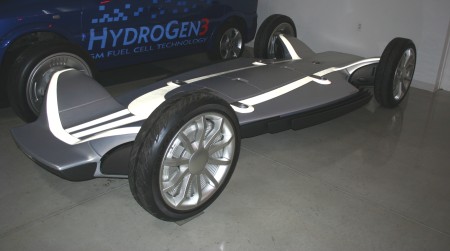
The original AUTOnomy skateboard
Since the running version of the Sequel was unveiled in 2006 the engineering team has spent thousands of hours driving, testing and modifying all the software that controls this incredibly complex vehicle. Controlling the interactions of the front drive motor, the two rear wheel motors, the fuel cell, battery system, electric steering and electric braking to ensure that no nasty interactions happen is a very time consuming task and critical making sure the vehicle can be operated safely. Equally important was to maximize the efficiency to ensure that every possible watt of energy was recaptured during braking, and that the battery contributed as much as possible to propulsion.
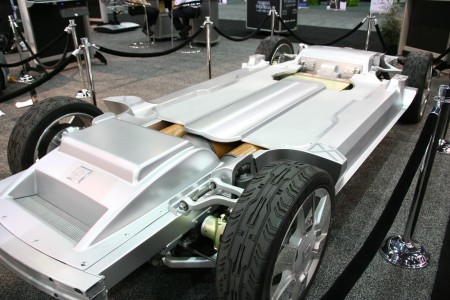
The skateboard as it evolved for the Sequel
The control strategy knowledge learned on the Sequel has now been transferred to the fuel cell Equinox that will go into limited production this fall. At least 100 examples of the Equinox are going to be built and leased to customers in California, Washington DC and New York as part of GM's Project Driveway. This is going to be GM's first large scale field trial of the technology in the hands of regular customers. Some of the Sequel engineering team have already moved over to the Equinox program.
The fuel cell technology in the Sequel and Equinox has now been superseded by the GM's fifth-generation design as shown in the fuel cell Volt at the Shanghai Motor Show. Running vehicles with the new fuel cell should start to appear before too long. The bulk of the Sequel team has now transitioned over to working on E-Flex and it's various iterations. The experience of maximizing mileage on Sequel and working with the lithium ion battery technology will be put to good use in making the Volt a reality.
One of the biggest issues with the Sequel that they will have to address is controlling the temperature of the battery. This posed the only problem on the 300 mile ride. The Sequel has air cooled lithium ion batteries and that was the plan for the Volt as well. When I spoke to Larry Burns near the end of the ride Tuesday about batteries, he said that they would be looking at all options for the battery system, but at this point it looks like liquid cooling may be necessary to achieve the robustness needed to survive in conditions from -30F up to 120F.
Chris Borroni-Bird in his role as Director of Advanced Technology Vehicle Concepts is thinking further out. Most of the concepts we see at car shows are primarily styling exercises with only limited functionality. Where there is functionality it's usually some new technology thought up by the engineers that may or may not have any practical use. Chris is looking further out into the future and he and his team are going to look at things from a different perspective.
Instead of thinking up new features and trying to figure out what to do with them, he will be focusing on societal issues, and looking at what kinds of technology can be used to address them. Even as our populations here and other places like Japan and Europe continue to get older, the desire for personal mobility remains. Technologies like autonomous driving vehicles and smaller single or two seat vehicles could be utilized to allow older, or younger people to get around in a safe efficient manner. Many of the technologies in Sequel like the by-wire steering and braking along with the wheel motors could be utilized to make this happen. We should be on the lookout for some of the results of this work in about three to four years.
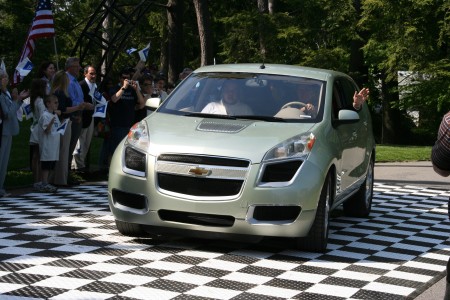
Larry Burns crossing the 300 mile finish line
As for the Sequels, they will continue to make the rounds of auto shows and demonstrations for the next couple of years. There won't be any more active development of these cars though and eventually they will glide of silently into retirement in places like the GM Heritage Center and other museums. They have served their purpose as a platform for learning and earned their degrees. It's time to move on.
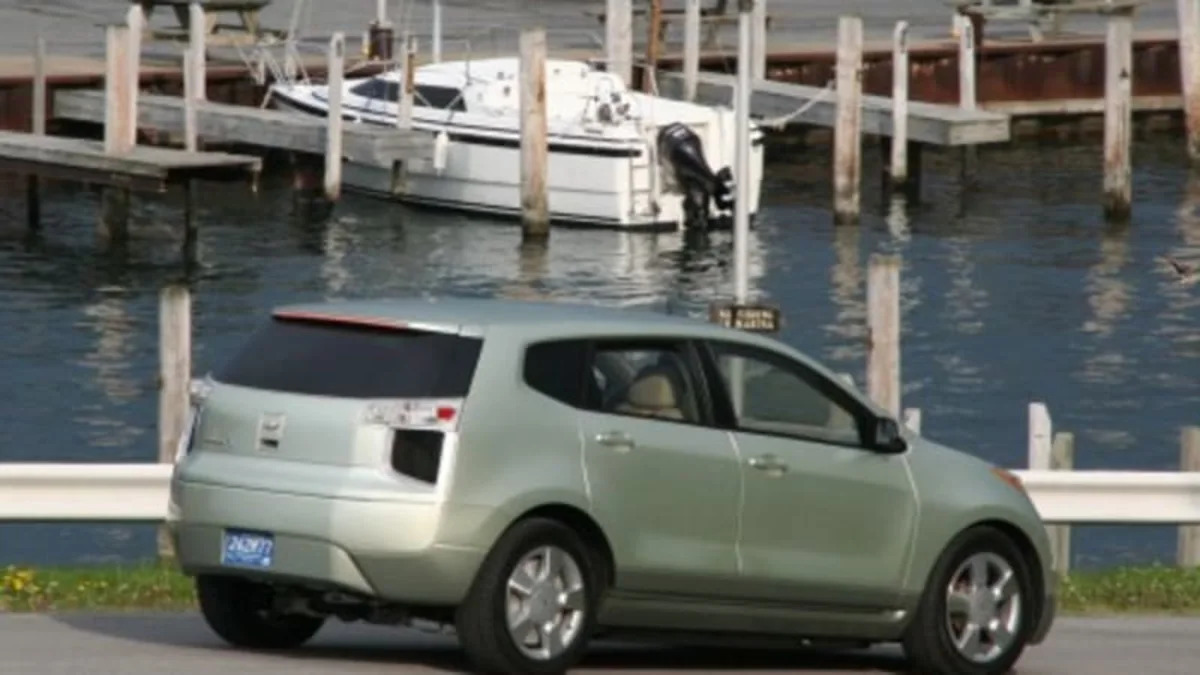
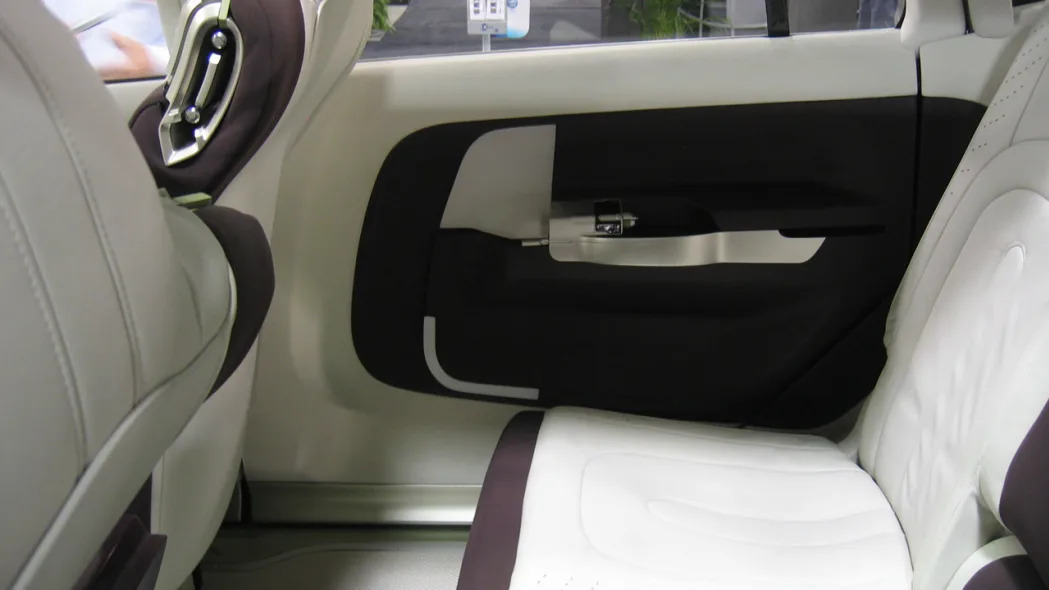

Sign in to post
Please sign in to leave a comment.
Continue